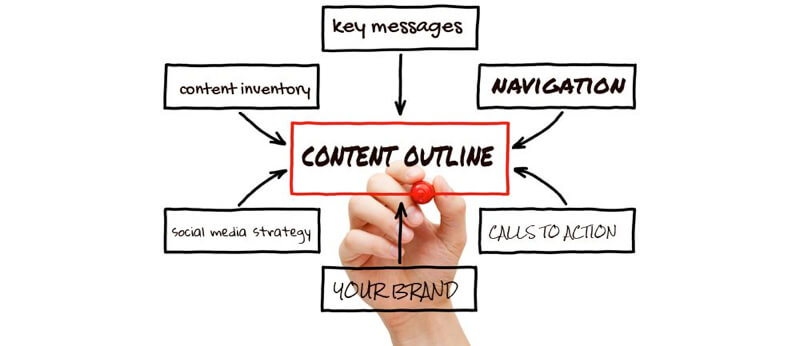To create an SEO-standard website content article, building a proper structure or outline is essential. Depending on the industry and target audience, writers can develop outlines in different ways. However, the main purpose is to avoid going off-topic while cleverly integrating keywords. In this article, Webnganh introduces you to how to create an SEO-friendly outline for website content. Let’s explore the details below!
1. What is a Website Content Outline?
Website content often consists of a large word count, which can easily lead to off-topic or scattered writing. That’s why an outline is created to guide the writer with clearly defined main ideas in a coherent, logical structure, helping convey the message to readers more effectively. Once the outline is in place, the writing process becomes much easier. It also reduces the likelihood of forgetting to include keywords, thus ensuring the production of high-quality content. A proper outline should include essential elements like: title, meta description, main keyword, secondary keywords, subheadings, references,…

2. How to Create an SEO-Friendly Content Outline for a Website
There are several approaches to building an outline, but here’s a basic process you can follow:
Identify the target audience and article topic
The first important step is to define the article’s topic and the target audience. You need to determine the age range of your readers, the types of content they enjoy, and the writing style that suits them best. Doing this step correctly increases the chances of reaching potential customers due to higher content relevance. This also helps retain visitors on your site and improves conversion rates.
Do keyword research to shape your content
Next, you need to identify the right keywords to develop the ideas determined in the previous step. Different age groups and industries approach keywords differently. You can use tools like Google Keyword Planner, Ahrefs, KWFinder, Keyword Revealer, etc., to search for high-volume keywords. This helps you create relevant content and reach customers more effectively..
Research the top 5 competitors’ content
This is a crucial step if you want your content to rank high on search engine results. By analyzing the top 5 ranking pages, you’ll understand their content direction, how they craft compelling titles, and which parts could be improved. You can then learn from them and improve upon their weaknesses to gain a higher ranking on Google.
Build SEO-optimized headings for your outline
After completing the steps above, it’s time to create SEO-friendly headings. Aside from optimizing the meta title, make sure to write compelling subheadings. Don’t forget to strategically insert both main and secondary keywords into the headings to enrich your content.
Create an SEO-friendly meta description
The meta description is the face of your article. Appearing alongside the meta title in search results, it needs to be carefully written to attract readers. When a search query is performed, your result is shown with a title and description, and a well-crafted description can significantly influence the user’s next action. A meta description that clearly summarizes the content increases the click-through rate (CTR).
Use long-tail and synonymous keywords in your content
Incorporate long-tail and synonymous keywords into your article. This reduces the risk of keyword stuffing, which can be penalized by search engines. The longer the article, the more repetition is acceptable — so using these elements enhances both competitiveness and content diversity.
Develop content based on the outline
The final step is to write the content based on the outline you’ve prepared. The content should be engaging, informative, and valuable to the reader. Only then can the technical elements in the outline be effectively utilized to produce high-quality articles.

Conclusion
You’ve just explored how to create an SEO-optimized outline for website content. Hopefully, the information shared above will help you find a suitable approach, enabling you to craft engaging content and ultimately improve your website’s ranking on Google.
Contact Information:
- INFINITY TECHNOLOGY SOLUTIONS LIMITED COMPANY
- Address: No. 3, Alley 2, C2 Carpet Zone, Cat Bi Ward, Hai An District, Hai Phong City, Vietnam
- Service Support: +84 965 21 8696
- Sales Contact 1: +84 339 68 2896
- Email: info@webnganh.vn
- Company Website: www.infiwebapp.com
- Brand Website: www.webnganh.vn
- Alternate Brand Website: www.webnganh.com






 Contact Us
Contact Us
